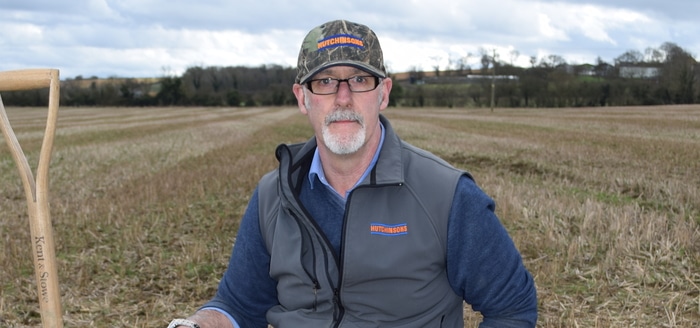Resistance drives a mindset change – CPM – Dick Neale
For independent blackgrass expert Dr Stephen Moss, sometimes the biggest resistance he’d face would come from growers themselves ...
“Back in 2000, it was like banging your head against a brick wall. We could see the impact reliance on chemistry was having, and were developing evidence-based cultural control strategies. But most growers just wanted a chemical solution.”
Enhanced metabolism resistance, also known as non target-site (NTSR), was the first resistance identified in the UK, he explains, and confers the ability in the grassweed to withstand almost any herbicide to a greater or lesser degree. “NTSR can be seen as shades of grey and varies according to how much a population has been exposed and the specific herbicide used.
“At the time Crystal was introduced, post-em herbicides were going downhill, but a lot of that was related to target-site resistance (TSR), where a genetic mutation blocks a specific active and resistance in individual plants tends to be total. However, back then we didn’t understand TSR at a molecular genetics level and there’s now a much greater awareness of the complexity and multiple mechanisms associated with NTSR.”
He notes that the standard test for NTSR uses PDM, which has more to do with the number of years it’s been a mainstay herbicide than how prone it is to resistance. “Flufenacet is certainly one of the herbicides that’s least affected by resistance,” he notes.
“But the key aspect about Crystal is that it’s very much less affected than any of the post-ems and resistance builds up slowly. In that respect, it’s a more durable product and has allowed growers to build their cultural control programmes. Attitudes have thankfully moved on now and there’s far less reliance on the chemistry –– where once spring cropping was demonised, it’s now accepted practice, for example,” Stephen adds.
Hutchinsons’ Dick Neale has seen the same shift in mindset. “20 years ago, growers didn’t really talk about resistance and a pre-em just wasn’t something you did. Crystal changed all that, and while there’s been a shift in its efficacy, it’s pretty exceptional that a blackgrass herbicide has retained its place in the market for 20 years.”

Dick Neale
Conversation at the company’s blackgrass site at Brampton, Cambs, evolved from looking for the next big-impact herbicide, to a focus on the pre-em stack, to splitting the stack, following up with a post-em spray.
“The post-em top-up took the place of Atlantis (mesosulfuron+ iodosulfuron) when ALS resistance began to build. We did a lot of trials work on various programmes, looking at two or even three splits,” he recalls.
“But you have to ask yourself, if you’re contemplating a high residual input, whether you ought to take a fundamental look at your overall grassweed strategy.
“There’s now a much greater awareness of resistance, acceptance that herbicides offer only limited control, and understanding of the importance of cultural measures. Growers can and do change their strategy and they have to change as the challenge of blackgrass evolves,” says Dick.
The ten aspects of an effective blackgrass battle strategy
Measurement and roguing – good reconnaissance gauges whether your efforts are making a difference.
Resistance management – getting a seed sample tested is an important first step in assessing the level of resistance you’re up against.
Reducing spread – blackgrass multiplies quickly, so a focus on activities that can cause it to spread ensures this is minimised.
Soil health – blackgrass thrives in cold, wet soil conditions, so improving the long term health of your soil will work against it.
Rotation – the aim is to deplete as much of the seedbank as possible – it’s the battle behind enemy lines.
Cultivations – the real key is to know when you need to bury it, and when you need to just leave it alone.
Establishment – the general principle is to try to avoid disturbing weed seeds when drilling.
Spray Application – the most uniform application will be achieved on smooth seedbeds, at low windspeeds, and low forward speeds.
Chemical control – while over-reliance on herbicides has led to resistance, the right herbicide choices can make a huge difference to success.
R&D – brand new modes of action in partnership with what we’ve learnt about cultural control give us all a fighting chance of finally being able to regain control over problem weeds.